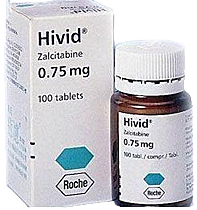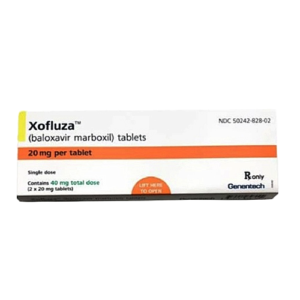Product Description
Zalcitabine is an antiretroviral medication that was previously used in the treatment of HIV (human immunodeficiency virus) infection. However, it’s important to note that zalcitabine is no longer widely used due to its side effect profile and the availability of more effective and better-tolerated antiretroviral drugs. Below is a comprehensive description of zalcitabine tablets:
- Generic Name: Zalcitabine
- Class:
- Nucleoside Reverse Transcriptase Inhibitor (NRTI): Zalcitabine is a nucleoside analogue that inhibits the reverse transcriptase enzyme, which is crucial for the replication of HIV.
- Brand Name:
- Zalcitabine was marketed under the brand name Hivid.
- Indications:
- Zalcitabine was used in the treatment of HIV-1 infection in combination with other antiretroviral agents.
- Mechanism of Action:
- Zalcitabine is converted intracellularly to its active form, dideoxycytidine triphosphate (ddCTP).
- ddCTP competes with natural deoxycytidine triphosphate as a substrate for reverse transcriptase, leading to chain termination during viral DNA synthesis.
- Dosage:
- The dosage of zalcitabine varied based on the patient’s weight and other factors.
- Zalcitabine was typically administered orally in the form of tablets.
- Common Side Effects:
- Common side effects included peripheral neuropathy, pancreatitis, nausea, vomiting, and diarrhea.
- Peripheral neuropathy was a notable side effect associated with zalcitabine use.
- Precautions:
- Zalcitabine was associated with the risk of peripheral neuropathy, and regular monitoring for this side effect was important.
- It should be used with caution in patients with pre-existing peripheral neuropathy or pancreatitis.
- Contraindications:
- Hypersensitivity to zalcitabine or any of its components.
- Pregnancy and Breastfeeding:
- The use of zalcitabine during pregnancy was generally considered when the benefits outweighed potential risks.
- Breastfeeding was not recommended due to the potential risk of transmission of HIV to the infant.
- Duration of Treatment:
- The duration of zalcitabine treatment was determined by the overall management plan for HIV, and it was typically part of a combination antiretroviral therapy.
- Discontinuation:
- Zalcitabine has been largely discontinued in many regions due to its side effect profile and the availability of more effective and better-tolerated antiretroviral drugs.
It’s important to note that the information provided here is based on historical use, and zalcitabine is not a standard part of current HIV treatment guidelines. Individuals living with HIV should work closely with their healthcare providers to determine the most appropriate and effective antiretroviral therapy based on current guidelines and their individual health needs.






